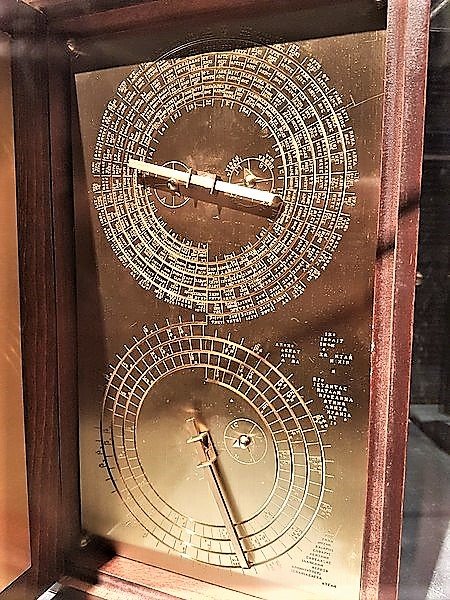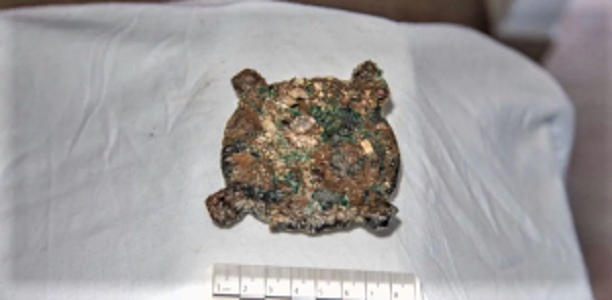Scientists have found that the computer can perform basic mathematical functions
and can accurately track the movements of the sun, moon, planets and constellations,
along with the timing of equinoxes and eclipses.
A missing piece of the world’s oldest analogue computer, the Antikythera Mechanism,
is believed to have been found on an Aegean seabed.
Discovered in 2017 resembling greenish rock,
further investigation on land has revealed it to be a bronze eight centimetre disk.
It features four metal arms at each corner with holes for pins, an x-ray revealing the engraving of Taurus the bull.
While it cannot be said conclusively whether it is a missing part of the Mechanism or not,
based on evidence found so far, it is said to look exactly like other parts of the computer.
The other possibility is that it could be part of a second mechanism that has yet to be unearthed,
 or something else entirely.
or something else entirely.
What is known so far is that Antikythera Mechanism was built by the ancient Greeks to calculate different astronomical positions.

Source
Plagiarism is the copying & pasting of others work without giving credit to the original author or artist. Plagiarized posts are considered spam.
Spam is discouraged by the community, and may result in action from the cheetah bot.
More information and tips on sharing content.
If you believe this comment is in error, please contact us in #disputes on Discord
Downvoting a post can decrease pending rewards and make it less visible. Common reasons:
Submit
Hi! I am a robot. I just upvoted you! I found similar content that readers might be interested in:
https://neoskosmos.com/en/124135/archaeologists-find-missing-piece-of-2200-year-old-antikythera-mechanism/
Downvoting a post can decrease pending rewards and make it less visible. Common reasons:
Submit